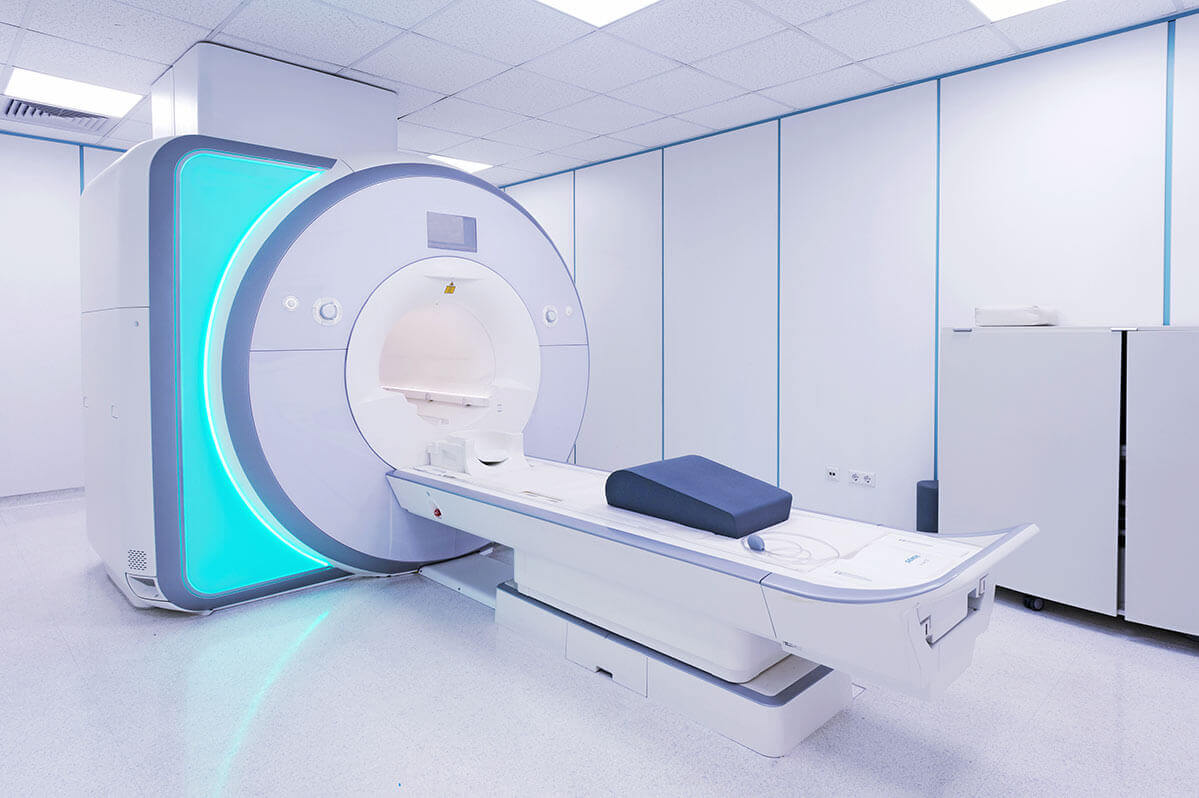

CNC machining is a computer-assisted manufacturing process that has redefined product creation used across various industries. The revolutionary technology allows modern manufacturers to smoothly operate machinery and factory tools with maximum precision.
The medical sector is one of the industries that greatly benefits from leveraging CNC machining capabilities. Here’s a guide exploring the role of CNC machining in the medical industry part production.
What Is CNC Machining in the Medical Industry?

Computer Numerical Control (CNC) machining is an automated manufacturing method that utilizes pre-programmed instructions to precisely shape different raw materials. When it comes to CNC machining services for the medical industry, this technology is critical to developing an array of:
- Customized implants
- Intricate surgical instruments
- Reliable diagnostic equipment
Why Precision Is Critical in Medical Device Manufacturing
Products used in the medical field need to meet strict precision requirements. Even minor inaccuracies can have serious consequences for patient and caregiver safety. CNC machining for medical industry parts guarantees adherence to tight tolerances. This precision is essential to the production of:
- Surgical tools with flawless functionality
- Prosthetics that accurately fit
- Implants needing precise dimensions and biocompatibility
Key Benefits of CNC Machining for the Medical Industry

CNC machining of medical devices comes with the following advantages:
- Impeccable accuracy: CNC machines operate with unmatched precision. This is especially important to surgeons who depend on reliable instruments to perform delicate tasks in minimally invasive surgery.
- Customization: The CNC machining process allows you to create personalized medical devices and parts tailored to the patient’s unique anatomy. By feeding patient-specific data obtained for MRI scans and 3D images, CNC machining can ensure exact fits of prosthetics for optimal treatment outcomes and functionality.
- Complex structures and shapes: CNC machining can handle medical projects with intricate internal components and complex geometries. This ability to carve out delicate features and internal channels is invaluable to developing micro-devices.
- Rapid prototyping capabilities: Developing prototypes allows you to create a functional final product. With the help of CNC machining, you can easily convert digital models into physical prototypes that you can test out.
- Streamlining of processes: CNC machining allows for the integration of advanced tech like AI to optimize processes. These innovations help to improve outcomes, enhance efficiency, and shorten production cycles.
CNC Machining Techniques Used in Medical Manufacturing
Some of the approaches you can utilize in precision machining for the medical sector include:
Milling, Turning, and 5-Axis Machining: Which One is Best?
- Milling is a popular method of CNC machining for medical devices. It involves using a rotating cutting tool to remove excess material from a stationary workpiece. This method is highly versatile for machining medical components projects with complex slots, shapes, pockets, and contours. It typically moves in 3 axes: X, Y, and Z.
- In 5-Axis CNC machining for medical devices, the milling machine can move in 2 extra directions. This allows the cutting tool to approach the workpiece at virtually any angle, enabling the production of complex geometries in a single setup.
- CNC Turning utilizes a rotating workpiece and stationary cutting to produce conical or cylindrical shapes. It is an excellent option for manufacturing medical products with round cross-sections and smooth finishes like bone screws, prosthetic limbs, and shafts for surgical tools.
Micro-Machining for Medical Devices: How It’s Changing the Industry
Micro-machining refers to a group of technologies that allow you to create minute medical parts that were practically unimaginable a few years back. These processes include:
- Micro milling
- Laser ablation
- Electrical discharge machining
Some of the medical products that arise from the process include:
- Stents: These are tiny mesh-like tubes that help unclog blocked arteries. Micro-machining helps improve the outcome of the stenting process, reducing the need for reinsertion.
- Microneedles: These tiny needles enable painless drug delivery or collection of bodily fluids, such as blood, for testing.
- Microfluidic Devices: These products help manipulate fluid movement through microchannels and microvalves.
- Implantable Sensors: These comfortable and less invasive implants help healthcare givers monitor vital patient parameters.
Swiss Machining vs. Wire EDM: Choosing the Right Approach

Swiss turning is a highly specialized CNC machining approach that allows you to produce small, intricate, cylindrical medical parts. Unlike other CNC lathe machines, the Swiss device keeps the workpiece stationary as the cutting tool chips away in a very precise and detailed manner. Swiss CNC machining medical devices utilize the following tools:
- Guide Bushings: These components support the workpiece close to the cutting area, reducing the chances of deflection.
- Live Tools: These tools enable the Swiss machine to perform drilling, milling, and other machining operations without moving the workpiece to another machine.
- Turning Tools: These include high-speed carbide- or steel-cutting tools that help accurately shape the material. Their selection depends on the workpiece properties and required surface finish.
Wire EDM for medical device manufacturing uses electrical sparks to erode the workpiece in a predetermined path. An electrode or wire inside a dielectric generates a spark as a high voltage passes through it. This spark melts the material through localized heating at extremely high temperatures. It is an excellent way of machining hard materials to create sturdy medical parts. Some of the most common EDM CNC machines you encounter in medical part production include:
- Wire EDM
- Hole drilling EDM
- Die sinker EDM
Hybrid CNC Manufacturing: Merging Traditional and 3D Printing Technologies
This exciting synergistic approach combines conventional CNC machining with innovative 3D printing tech. A typical hybrid process may involve building a near-net shape part using any of the additive 3D printing approaches like:
- Selective Laser Sintering
- Direct Metal Laser Sintering
- Multi-Jet Fusion
Each method has different material compatibility and building mechanisms. After creating the initial component, you can precisely finish it and impart the needed features with CNC machining.
Choosing the Right Materials for Medical CNC Machining
CNC machining is compatible with various metals, plastics, and composite materials. This versatility enables you to choose the most suitable material depending on the medical application. Below is a section covering some of the most common materials in medical CNC machining and what to consider when choosing them.
Biocompatible Metals: Titanium, Stainless Steel, and Cobalt-Chrome Alloys
Some of the key metals often selected for making CNC-machined medical parts include:
- Stainless steel: This easy-to-polish metal offers outstanding corrosion resistance and biocompatibility. Its uses include forceps, hemostats, tweezers, and hip joint replacements.
- Aluminum: This lightweight material has an excellent weight-to-strength ratio. It responds favorably to anodizing, enhancing the parts’ aesthetic appeal and corrosion resistance. While it may not be ideal for making devices that come into direct body contact, aluminum is perfect for support equipment like wheelchairs, orthopedic supports, and IV stands.
- Titanium: This metal is an excellent substitute for stainless steel in applications that require high strength and durability. It is ideal for creating bone replacement, prosthetics, and skeletal supports.
- Nitinol: This metal alloy, composed of nickel and titanium, is known for its superelasticity and shape memory. You can use it to machine catheters, stents, and orthodontic devices.
- Cobalt-Chrome: This alloy offers amazing wear resistance, especially when used as a high-stress implant for knee and hip replacements.
High-Performance Plastics for Medical Applications: PEEK, PTFE, and Beyond
Plastic resins are preferred for medical applications due to their versatility and ease of sterilization. Some key plastics in medical CNC machining include:
- Polyether Ether Ketone: PEEK is a high-performance thermoplastic with incredible durability. You may find it as temporary contact products, like ventilator tubes, prosthetics, and surgical clamps.
- Polycarbonate: This CNC machining plastic has high impact resistance, strength, and optical clarity. Its uses include making equipment housings, respiratory masks, protective goggles, and connectors.
- Polypropylene: PP’s flexibility and corrosion resistance properties are immensely used in tubing, containers, and non-implantable parts.
- Acrylic: PMMA is easy to machine and has clarity, making it ideal for lenses, surgical instrument handles, and diagnostic device parts.
- Polytetrafluoroethylene: PTFE is a low-friction, corrosion-resistant plastic you may encounter in seals and catheters.
Material Selection Factors: Strength, Sterilization, and FDA Compliance
There are several key factors to consider when choosing a material for your next precision CNC medical machining project. First and foremost, you must check the materials for strength and chemical resistance.
Most medical equipment requires regular cleaning and sterilization owing to repeated use. The material must be durable and resistant to different sterilization methods, such as harsh chemicals, steam, and radiation sterilization.
Moreover, numerous permanent and temporary CNC machined medical parts and implants maintain long-term contact with the body. These devices include artificial joints, prosthetic heart valves, hearing aids, and pacemakers. Biocompatibility is a key consideration in this instance to guarantee optimal health outcomes.
Regulatory Compliance and Quality Standards in Medical CNC Machining
Quality control and compliance with regulatory standards are crucial to guaranteeing project precision and accuracy. One of the key standards applicable to CNC machined parts for healthcare companies is ISO 13485, an international standard that specifies the requirements for a Quality Management System. It emphasizes process validation, risk management, and continuous improvement.
The Food and Drug Administration also plays a role in regulating medical device manufacturing. Its Quality System Regulation defines prevailing good manufacturing practices of medical device producers. This regulation covers all the facets of production, including design development, packaging, labeling, and distribution. This guarantees traceability and quality control.
Emerging Technologies Shaping the Future of Medical CNC Machining
The future of CNC machining in the medical sector lies in several impressive advances:
- Internet of Things: IoT enables machines to communicate with each other, utilizing a centralized system. This helps improve workflow during production.
- Data Analytics: By analyzing vast amounts of data, you get to improve your medical product machining processes to achieve higher efficiency and precision.
- Artificial Intelligence: This innovation is instrumental in streamlining CNC machining for the medical industry. AI is revolutionizing CNC machining by enabling predictive maintenance which allows manufacturers to evaluate machine performance in real time. This helps to extend the equipment’s lifespan while improving machine reliability.
- Smart Manufacturing: This technology helps address challenges like supply chain disruptions and labor shortages.
CNC Machining vs. Other Manufacturing Methods: Which One Wins?
Medical device manufacturers often utilize different methods to create a single final device. But how does CNC machining compare to other manufacturing processes? Well, while the CNC machining process enables high precision production of prototypes and the final products, the material removal process can be quite wasteful. Meanwhile, 3D printing is highly customizable, excellent for complex geometries, and known for less material wastage.
Injection molding, on the other hand, is very cost-effective for high volumes and fast production times and can create complex shapes. However, it may have higher long-term tooling costs than CNC machining and limited material selection.
Traditional machining, like manual milling, has a lower initial investment and is ideal for simpler parts. However, it is more prone to human error, finding limited use in medical device manufacturing.
Choose The Federal Group for Medical Device Manufacturing
For critical medical components, trust The Federal Group’s expert CNC machining services. We deliver custom-quality products with full regulatory compliance. Our dedicated team provides unparalleled customer support from product concept to completion. Inquire today about our precision CNC machining services for the medical industry.
Richard Jegla
Sales Engineer
Richard has been on The Federal Group team for 24 years and his knowledge spans a variety of mechanical engineering topics. When he isn't assisting his clients, he is routinely working on his motorcycles and off-road vehicle projects.
Up Next


